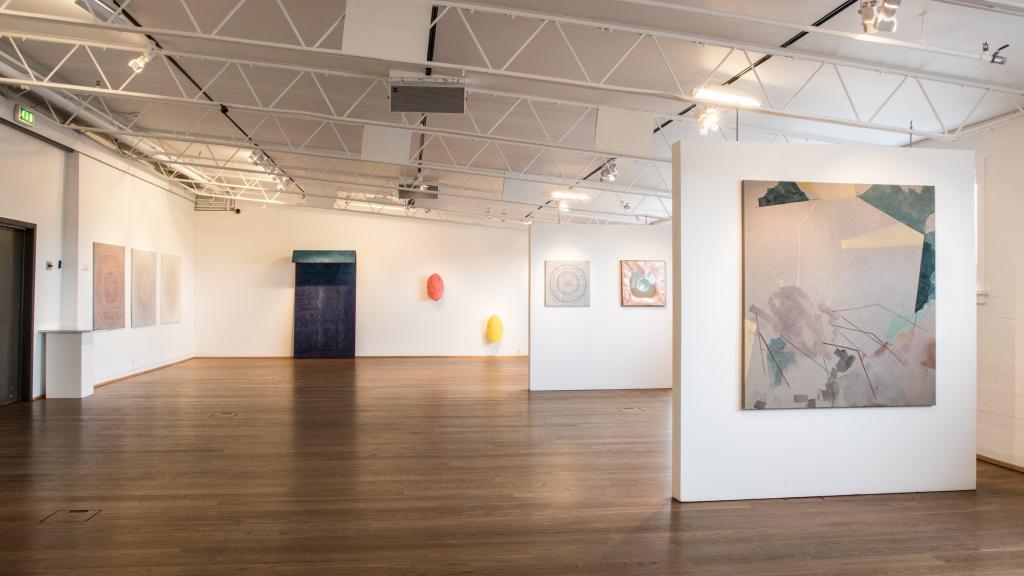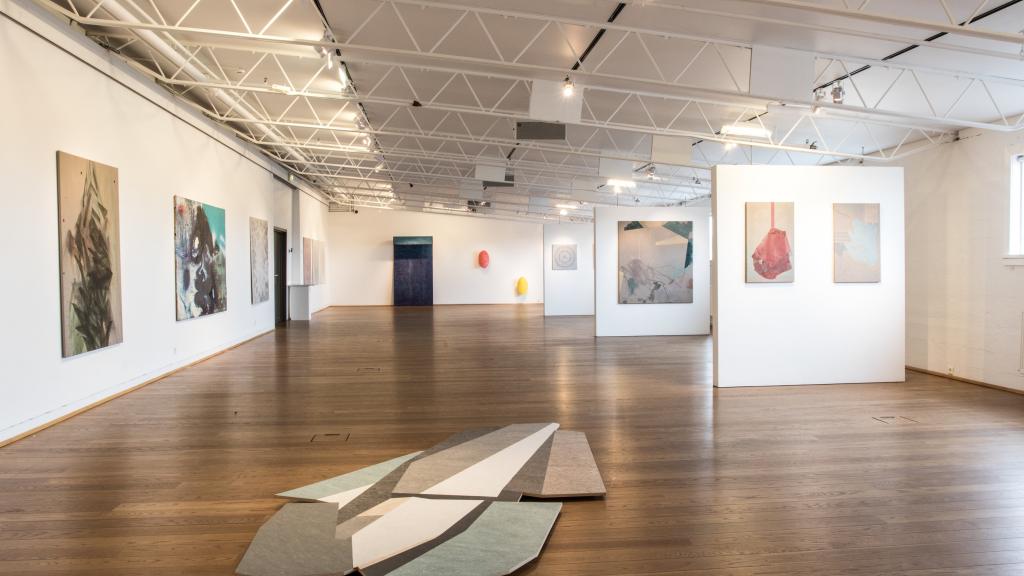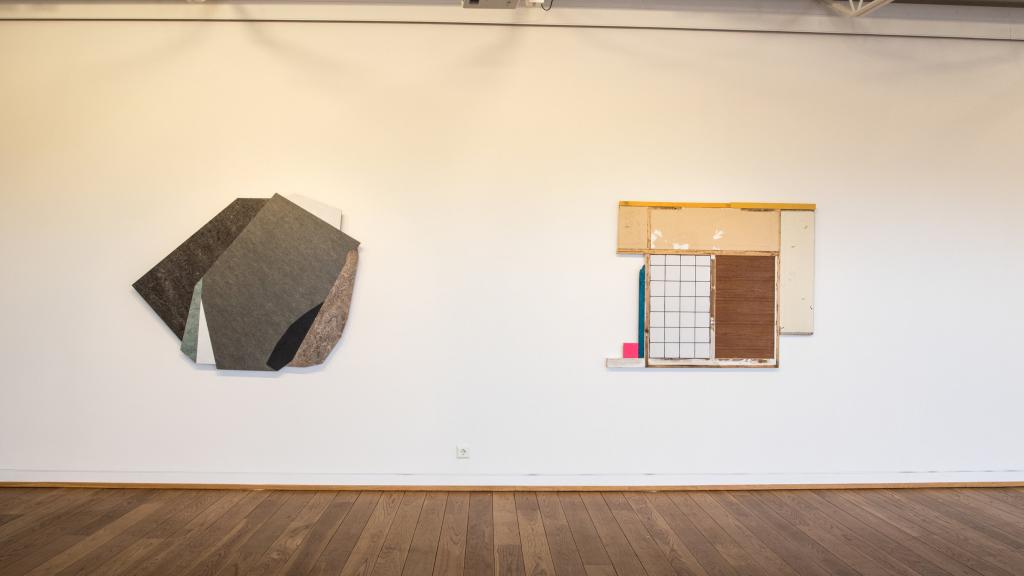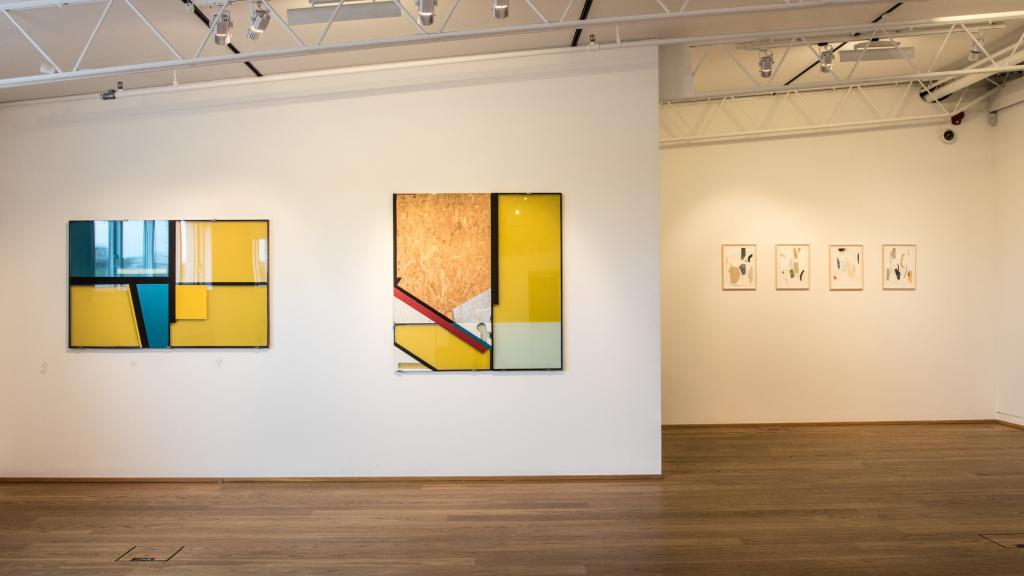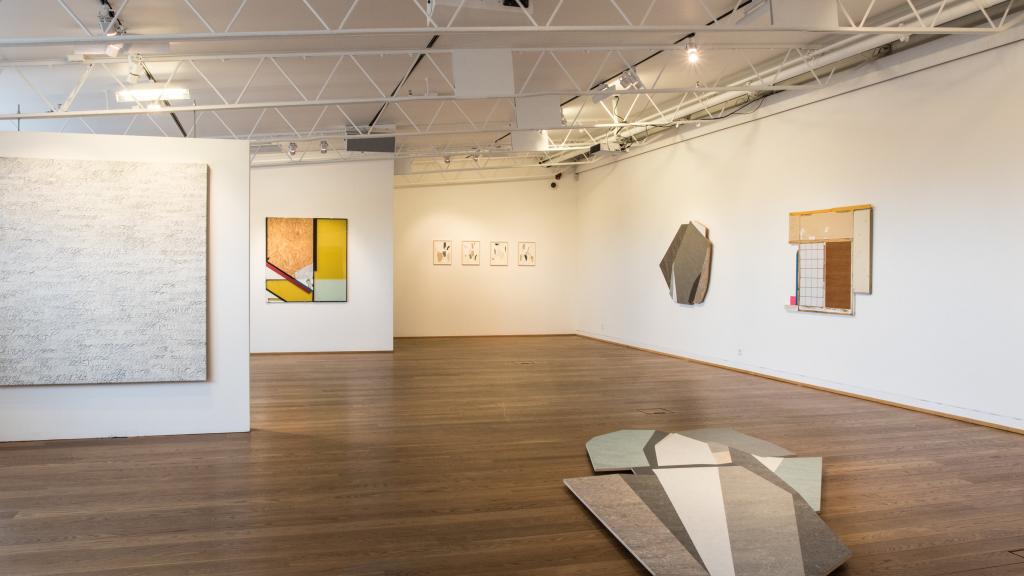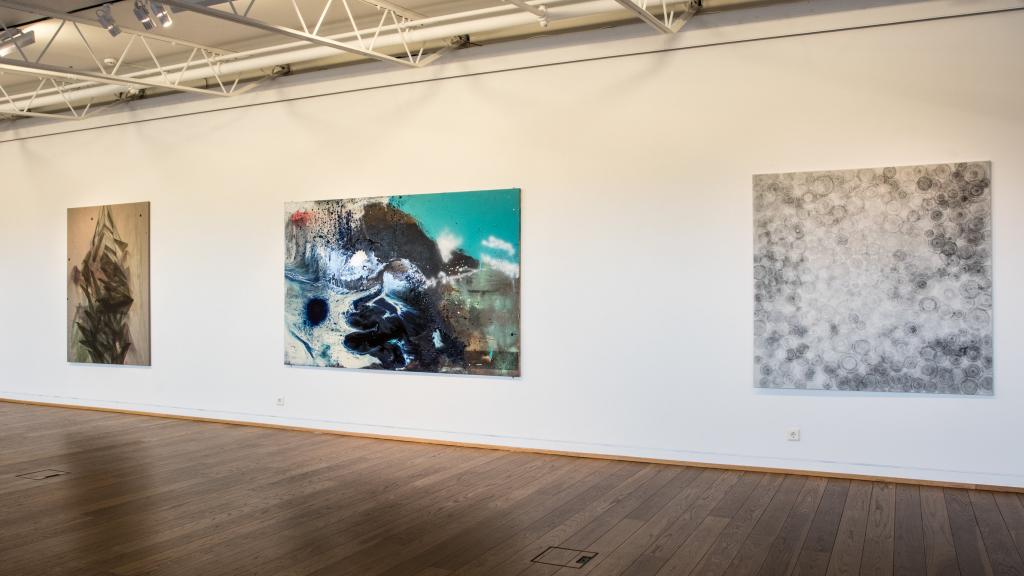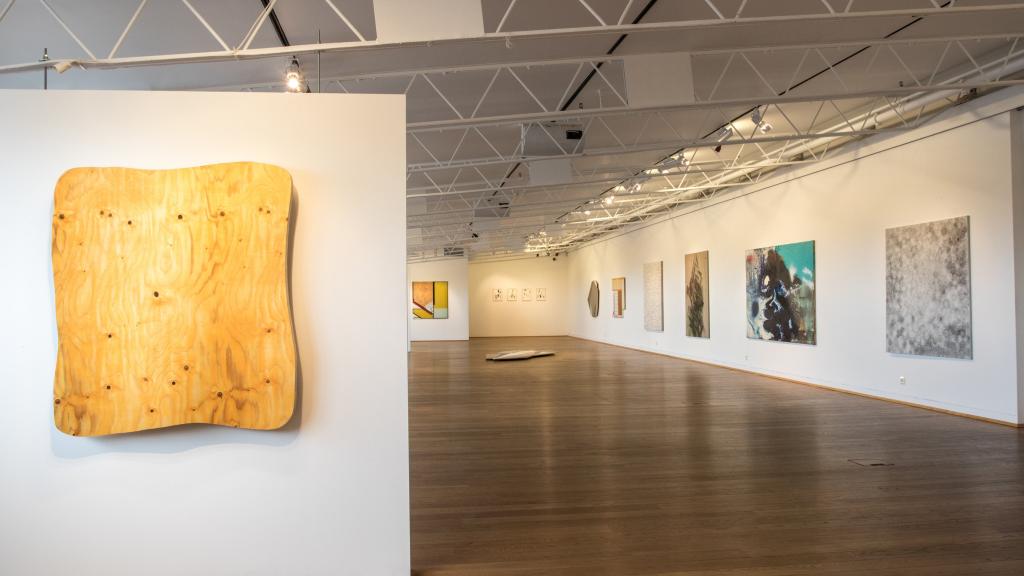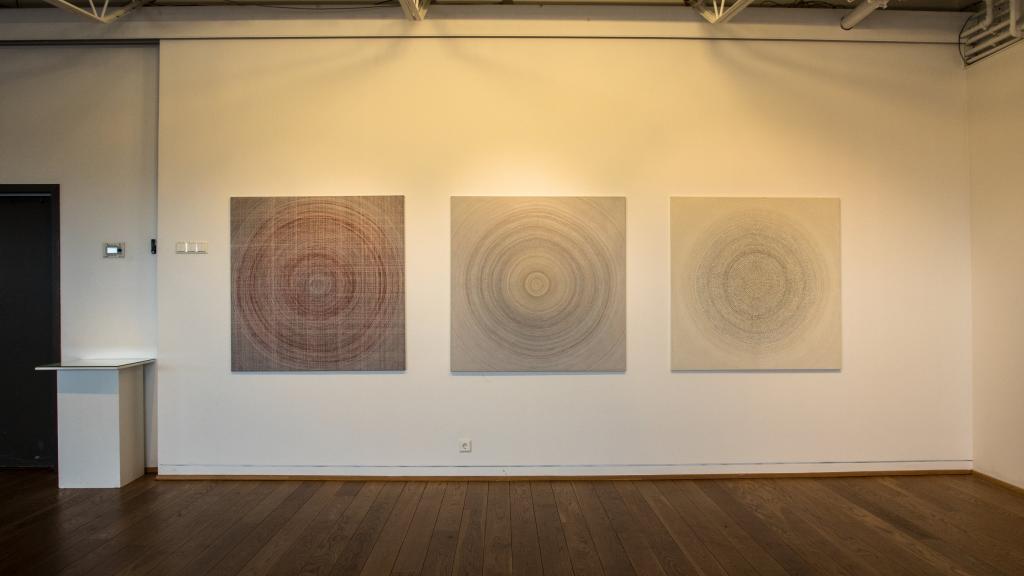New show, new world
During the last few decades, Icelandic abstract art, the art of intense subjectivity, lyricism and the inscrutable, has had a difficult time of it. Yet it was for some time the central paradigm of Icelandic art, and subsequently a viable alternative to the Conceptual and Fluxus-based art that followed. During the Eighties and Nineties it was gradually sidelined and deemed irrelevant by some of the Icelandic art worldʽs most influential power-brokers. Paradigm shifts are complex phenomena, but hopefully future scholars will be able to unravel the plot of that particular shift. It is all the more perplexing in that abstract art more than held its own in Icelandʽs neighbouring countries during the same period.
In conversations and written statements, the artists in the A17 show have indicated that in order to devote themselves to abstract art, they virtually had to opt out of the Icelandic art scene, look for art shools outside Iceland and find themselves another „scene“. Having done so, a „new world“ was opened to them, to quote one of the artists. And what did this world reveal to them? They mention the international language of abstraction, its inexhaustible formal vocabulary, the sense of freedom that came with it, its challening unpredictability, its emotional „charge“ - and the possibility of creating for themselves an abstract space that was truly their own.
All of the above can be applied to the work of the seven artists in the A17 show. Moreover, they want to be taken seriously and have no intention of letting themselves be shunted aside in favour of other paradigms in the foreseeable future. The Reykjanes Museum thanks them for their participation and spirit of cooperation.
Aðalsteinn Ingólfsson, curator
A17
Around the middle of the 20th century, modernism in visual art was defined above all by abstract painting. Clement Greenberg, the period´s most influential spokesman for modernism, considered medium specificity at its core, i.e. that there were inherent qualities specific to each artistic medium, and a part of the Modernist project involved creating artworks that were above all „about“ their particular medium; in the case of painting, the two-dimensional reality of their facture led to an increased emphasis on flatness.
In the mid 1960s a number of artists and scholars began to question Greenbergʽs hard-line modernism. They wondered where the difference lay between sculpture or three-dimensional objects on the one hand and painting on the other and whether art neednʽt rid itself of this demarcation. Donald Judd came up with the term „specific object“ after seeing Frank Stella´s so-called „paintings“, which cut across the borders of painting and sculpture, thus blithely ignoring Greenbergʽs theory of medium specificity. The ensuing changes and controversies are sometimes seen as part and parcel of the „death of modernism“, where the whole framework of modern art was called into question, resulting in prolonged debate in every corner of the art world.
Admittedly we have still not seen the last of these debates, though the younger generation of artists seems to be largely unconcerned by the fallout caused by the „death of modernism“. Today, the art of aesthetic precepts and sentiment seems to be on the upswing, though we still find a difference of attitude between those who claim to be working from experience and rely on their own sensibility and feelings, and those who put their faith in systems of visual logic and intellectual procedures. The difference is between seeing art as an expression engendered by a personal necessity, yet able to cast new light on our existence and aesthetic needs, or as an art of inquiry, where the artist takes on the role of researcher, examining his subject matter under the microscope, as it were. As researcher, the artist is not to be waylaid by his personal emotions or the turmoil around him, but has to stay disciplined to the last in order to produce an art that is true and fine, devoid of sticky sentimentality or cutesy effects.
From the time of its inception, abstract art has retained the ability to confound. Perhaps this is due to the severing of the link between art and what we call reality. In our our postmodern world, the idea of „the real“ has admittedly become rather vague, worn-out and nonsensical. Yet people still expect to see recognizable imagery in paintings; if itʽs not there, the painting is written off. One thinks of the famous painting by René Magritte of a large pipe, with a caption that reads :“This is not a pipe.“ The viewer is told in no uncertain terms that the painting that purports to be a depiction of a particular object, in this case a pipe, is actually an independent object, paint on canvas.
We can therefore say that virtually anything can be a work of art, depending on the context. A sheet of steel is no less effective as an art object than a painted canvas. We can add the famous urinal and other „ready mades“ by Marcel Duchamp or the lipstick-marked glass bought by the Akureyri Art Gallery and exhibited as a work of art, in the wake of a putative „art performance“ by then Prime Minister, Jóhanna Sigurðardóttir, who had used the glass during a famous radio interview.
What is abstract art? Frequently one sees it being linked to particular historical periods and circumstances, and as such it ihas been written off as „historical“,and therefore obsolete, tool for our polyphonic times, where we are confronted with many realities at once. This polyphony is the dominating characteristic of the present show. Hadda Fjóla Reykdal examines natural phenomena without linking them to particular places, while Sara Oskarsson turns herself into an alchemist of sorts, focussing on catalyctic and metamorphic processes of matter, as metaphors for the catastrophic pollution of nature. Logi Bjarnasonʽs painted sculptures are imbued with an ironic yet essentially optimistic view of his particular external and internal world, while deliberating over the purpose of placing objects or ideas in a given context. Halldór Ragnarsson works with our reliance on words and their meanings and their use as tools for expression and definition, moreover how a text, significant or devoid of significance, loses its purpose and how it can be made to yield a new meaning through a visual process.
Marta María Jónsdóttir, Magnús Helgason and Áslaug Í.K. Friðjónsdóttir have in common the traditional approach to modernism, where there is a clear correlation between content and structure. This is especially true of Helgasonʽs paintings-combines, which start out as chaotic improvisations that eventually succumb to order. Friðjónsdóttirʽs sculptures, paintings and collages are made out of materials we use to „coat“ our middle-class world, not least various linoleum floor materials together with paint. Jónsdóttirʽs work is characterized by a an unaffected and elegant freedom of movement.
This is a generation of artists that seems to be free of the narrow-mindedness of their earlier colleagues, who as often as not would be competing for power, recognition and fringe benefits. This is also the generation of the digital screen which has hijacked and overloaded a large part of our world view, filling it with a plethora of intangible data that serve to soothe us as well as add to our feelings of emptiness. In a world like that, the need to create out of ones feelings, instincts, eccentricities, sense of freedom and beauty, is no less important than in the heyday of abstract art.
Bjarni Sigurbjörnsson, curator


